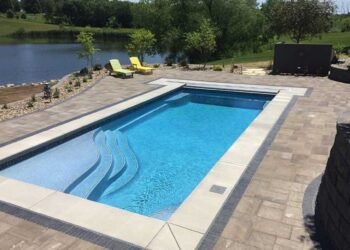Introduction to Assisted Living Costs
Choosing an assisted living community represents a profound decision, shaped by the resident’s needs and the family’s financial implications. While upfront fees are clearly outlined, families often find themselves unprepared for less obvious costs that reveal themselves over time. These hidden fees, if not anticipated, can strain financial resources unexpectedly. For example, investigating prospects such as assisted living Xenia, OH, requires a deeper probe into the fee structures to capture the breadth of potential expenditures truly.
This comprehensive understanding of total costs ensures that the selected community remains within reach financially while meeting all care and quality of life expectations. Advertised prices often cover only the minimal needs, overlooking costs associated with advanced healthcare, diverse activities, and personalized care options that can seem ancillary but quickly add up. Through meticulous financial planning and scrutiny, families can prepare realistic budgets that protect against financial uncertainties.
Unpacking Basic Service Fees
The notion of a basic service fee in assisted living communities generally encapsulates accommodation, meals, essential utilities, housekeeping, and some transportation. However, the definition of “basic” is incredibly fluid and varies considerably from one facility to another. In certain communities, a robust range of services could be included under basic fees, whereas others may impose additional charges for even commonplace needs.
For families, the prudent strategy involves a deep dive into what this fee truly covers. Questions should revolve around specifics: Are utilities like electricity and water encompassed entirely, or do they incur further costs? Does basic transportation apply universally, including necessary outings like medical appointments, or is it restricted to specified trips? Clarifying these essential components allows families to circumvent future billing surprises, ensuring every service requirement aligns comfortably within the controlled expectations set by the budget and needs of the residents.
Understanding Healthcare Services Charges
Healthcare services within assisted living communities are often unpredictable in cost. They play a significant role because while basic activities of daily living—such as assistance with bathing, dressing, and medication—might be part of initial plans, other specialized services tend to accrue additional expenses. Types of services that typically warrant extra fees include physical therapy, advanced memory care, and rehabilitative services, all of which can significantly increase monthly expenditures.
With this variability, it becomes crucial for families to anticipate potential healthcare needs early on. Detailed evaluations of what health services are included in basic packages, contrasted against premium services that carry additional fees, are essential. Families can engender peace of mind by accounting for these factors in their financial planning. This approach prepares them for the financial aspects of potential healthcare developments and ensures that their loved ones receive seamless and uninterrupted care tailored to their evolving needs.
Amenity-Related Costs
The allure of amenities in assisted living communities is considerable, bolstering quality of life. Yet these additional features contribute to rising costs, particularly for luxurious options like gourmet dining, holistic wellness centers, or dedicated concierge services. While elevating the living experience, such amenities often involve ancillary fees that quickly add to the monthly bill.
It necessitates a deliberate evaluation from families regarding what amenities remain essential versus those that merely enhance lifestyle experiences at a higher cost. By identifying core needs in contrast to luxury perks, families create comprehensive budgets that balance fiscal responsibility without compromising on personalized care and comfort. Ensuring the quality of life aligns with financial capabilities involves discerning planning, eliminating unnecessary options while embracing those that deliver tangible benefits to the resident’s daily life.
Analyzing Contracts and Fees
Contracts underpin the financial engagement between families and assisted living communities. They often comprise intricate details about entry fees, deposits, exit charges, and conditions affecting rate changes, which, if overlooked, could lead to financial misunderstandings. Understanding these components establishes transparency and safeguards against unpredictable fiscal disputes.
Execution of best practices involves careful contract reviews potentially assisted by a legal expert or financial advisor to ensure complete comprehension. By closely examining all terms related to potential rate hikes or changes in service conditions, families can safeguard their commitments and engage in informed decisions that align with their long-term financial planning. Such vigilance imbues families with confidence, providing a stable foundation for a seamless transition to assisted living.
The Significance of Location-Specific Costs
Geographic location substantially influences the associated costs of an assisted living community. Urban centers with high living expenses naturally lead to greater outlays than rural, less densely populated settings. Therefore, location must be central to discussions of financial commitments when selecting a community.
Aside from pricing, families should consider factors such as proximity to supportive relatives, accessibility to specialized health care services, and the lifestyle offerings of the community’s locale. These elements considerably influence financial allocation and directly impact the resident’s quality of life.
Conclusion
Choosing an assisted living community involves a comprehensive understanding — recognizing visible and hidden costs. Identifying these potential expenses empowers families to develop strategic approaches to budgeting, thereby safeguarding against financial uncertainties. This preparation ensures a smoother transition into assisted living, allowing families to proceed confidently and clearly.
Diligent research and professional advice support these decisions and lay a solid foundation for an informed choice that bridges cost, quality care, and preferred amenities. Such alignment supports a satisfying environment characterized by peace of mind and enduring satisfaction for the residents. This ensures that the shift to assisted living remains a positive and reassuring experience for all parties involved.













